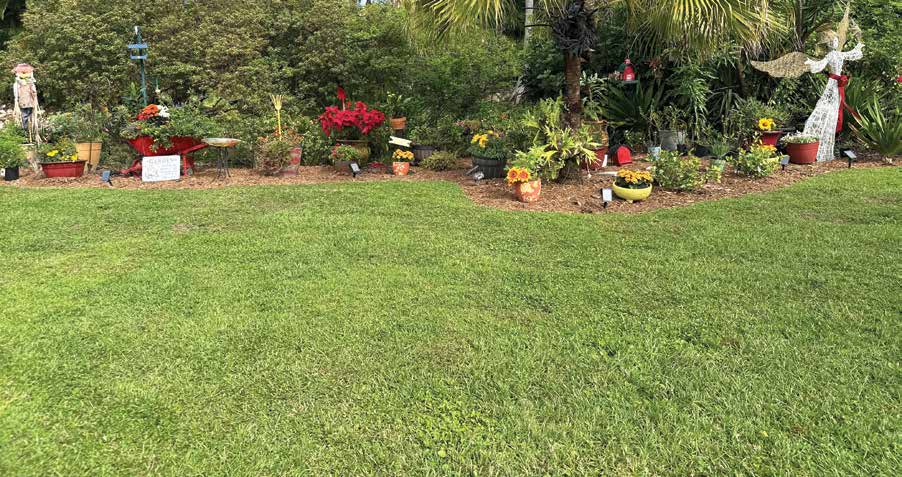Butterfly Bubby’s March Madness by Lois Bolin, Ph.D., Old Naples Historian

Anyone who knows “Butterfly Bubby” from FB knows she loves butterflies, but did they know that over these past six years; this love slowly turned into an obsession? She now understands how Orchidelirium took hold in the Victorian era when wealthy orchid fanatics of the 19th century sent explorers and collectors to almost every part of the world in search of new varieties of orchids.
This self-proclaimed fanatic isn’t wealthy, so luckily, she didn’t have to look any further than her own metaphorical backyard to satisfy this passion.
Lepidopterans, Butterflies, and Moths, oh my!
Lepidopterans offer us a magical bridge to an enchanted world free from the stresses of life as we watch those brilliant colors glide effortlessly above us. By inviting them into your garden, it will not take long before you become a part of their natural world.
According to ‘The Journal of the Lepidopterists’ Society’, there are approximately 750 species of butterflies in the United States, with over 17,500 species in the world. Allegedly, there are approximately 40 unique to the Sunshine State. In fact, Florida has more butterfly diversity than any state this side of the Mississippi and if you don’t believe me; visit Naples Botanical Gardens, a butterfly haven which provides the butterfly larval food and nectar plants necessary to maintain a healthy butterfly population.
“Nearly 150,000 species of lepidopterans (moths & butterflies) have been identified worldwide; with around 765 butterfly species in North America… Florida has the most diverse lepidopteran population (almost 3,000 species).” (FloridaSplendors.com)
Over 60 unusual lepidopterans have been identified as endangered in Florida with at least 44 species classified as
endangered or critically endangered.
The life cycle of a butterfly entails four distinct stages: egg, larva (caterpillar), pupa (chrysalis), and adult. Female butterflies lay their eggs on or near an appropriate larval host plant with the eggs hatching within a few days. Butterfly larvae have enormous appetites (Lordy don’t I know. See my milkweed monthly bills.)
So how do you begin? Ideal Plants for Florida Butterflies Search DuckDuckGo.com for a particular plants soil, then prep the dirt and now start planting your nectar-rich flowers. Milkweed. This plant is a must-have for monarch butterflies, and it also attracts other species with its fragrant flowers. Zinnias. These colorful flowers provide a great source of nectar, and they bloom from late spring to early fall. Lantana. A great choice for hot, dry areas which attracts both butterflies and hummingbirds. Pentas. One of my favorites. They are available in a variety of colors and are also known for attracting swallowtail butterflies. Salvia. Another fav that has spikes of purple or blue flowers which attracts many species of butterflies, including monarchs.
Best Host Plants for Florida Butterflies
In addition to nectar-rich flowers, it’s vital to include host plants in your butterfly garden. Here butterflies lay their egg and serve as food for butterfly larvae. Here are some of the best host plants for butterflies in Florida:
Milkweed It is the only host plant for Monarch butterflies and after they are devoured by those sweet Pacman eating machines called caterpillars; put a bit of fertilizer in the pot and get them in the sun to keep the rotation going.
Passionflower This vine is a host plant for Gulf Fritillary butterflies and has unique and beautiful flowers.
Cassia Love, love, love this plant which serves as a host for Sulphur butterflies.
Dill and fennel These herbs are host plants for Black Swallowtail butterflies. It also attracts other beneficial insects like ladybugs and lacewings.
Citrus trees The Black Swallowtail butterfly uses citrus trees, such as lemon and lime trees, as host plants, she says kicking up her heels.
Pipevine The Pipevine Swallowtail butterfly lays her eggs on pipevine plants. These non-native plants can be a bit difficult to find, but they are well worth the effort if you want to attract this beauty to your garden. Are they poisonous? Not to Pipevine caterpillars who sequester the toxins which then make them undesirable to predators even as adults.
March’s Madness
NCAA’s March Madness launches on March 17, along with St. Patrick’s Day. Basketball and beer – what a combo. While
Southwest Floridians host lepidopterans all year long, those poor unfortunate souls “up yonder” eagerly look for signs of spring on March 3, World Wildlife Day.
While Butterfly Bubby chooses to not limit her madness to March, she is inviting you to join in this delightful madness by planting milkweed wherever you can.




Leave a Reply
Want to join the discussion?Feel free to contribute!